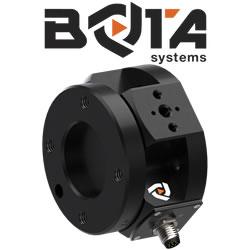Construction Robotics Market to Reach $226 Million Worldwide by 2025, According to Tractica
Construction is a historically labor-intensive industry with little automation. The traditional solution to achieving more production was to simply add more workers. Whereas productivity in many other industries has risen substantially, productivity in construction has been nearly flat because little technology has been developed or introduced until recently. According to a new report from Tractica, the industry is ripe for disruption, and a growing number of construction companies are incorporating robots to solve labor shortages and reap the benefits of improved speed, efficiency, safety, and profits. Robots are beginning to make their way into a variety of construction tasks, promising to change the way the industry creates homes, buildings, and other infrastructure.
Tractica forecasts that growing interest in construction robots will drive an increase in market revenue from $22.7 million in 2018 to $226.0 million annually by 2025. During that period, the market intelligence firm forecasts that more than 7,000 construction robots will be deployed to address a variety of construction and demolition tasks. The largest market in terms of unit shipments will be for robot assistants used on construction sites, followed by infrastructure robots, structure robots, and finishing robots.

“At this early stage in the construction robotics industry, a few companies are offering products for sale or lease,” says senior analyst Glenn Sanders. “The main categories that are currently available include robots for demolition, bricklaying, drilling, 3D printing, and rebar tying, plus a few exoskeletons and assistant robots for lifting loads.”
Sanders adds that midsize and major construction companies are beginning to adopt these robots to solve issues related to labor shortages, safety, speed, accuracy, and integration with building automation and building information modeling (BIM).
Tractica’s report, “Construction & Demolition Robots”, provides forecasts and market sizing for construction robots shipments and revenue during the 2018 to 2025 timeframe, segmented by world region and application type. The report provides an in-depth discussion of the global market trends, drivers, challenges, and technological issues influencing the market development of construction robots. A detailed picture of market participants is presented, based on interviews with CEOs and research profiling 28 key players, as well as a company directory of 60 significant and emerging industry players. An Executive Summary of the report is available for free download on the firm’s website.
About Tractica
Tractica, an Informa business, is a market intelligence firm that focuses on emerging technologies. Tractica’s global market research and consulting services combine qualitative and quantitative research methodologies to provide a comprehensive view of the emerging market opportunities surrounding Artificial Intelligence, Robotics, User Interface Technologies, Advanced Computing, Connected & Autonomous Vehicles, and Wearables & Digital Health. For more information, visit www.tractica.com or call +1.303.248.3000.
Comments (0)
This post does not have any comments. Be the first to leave a comment below.
Featured Product

